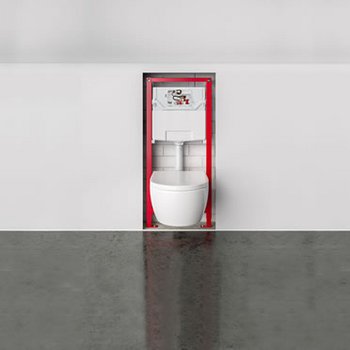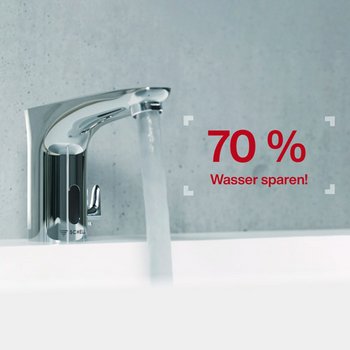The Augsburg Water Management System: a sustainable model for innovative water usage
8-minute read
The citizens of Augsburg have known about the importance of protecting and handling water for centuries. Even to the present day, the ‘Augsburg Water Management System’ remains an effective and exemplary approach.
The Augsburg Water Management System first appears in written records in 1276. Developed gradually from the 13th century onwards, this system became the cornerstone of the city’s leading role as a pioneer of hydraulic engineering. Some 70 years after first being mentioned, Augsburg built its first impoundment. In the centuries that followed, Augsburg then constructed a well-designed system of canals to supply its citizens with drinking water and process water. In 1545, for example, Augsburg introduced the strict separation of drinking water and process water. This resulted from the realisation that pure, unspoilt spring water is essential for good human health. Long before science was able to detect the hygiene and health hazards resulting from contaminated water, this was a key step in the direction of good health.
More than the sum of its parts
The Augsburg Water Management System is exemplary in its handling of this valuable resource, encompassing river water sources as well as a network of canals and watercourses that enforce the separation of potable and non-potable water. One challenge here was supplying water to the historical old part of the town, located on a plateau with significant height differences to the rest of the city. To resolve this problem, the city constructed water towers from the 15th to the 17th centuries, supplied by pumps first driven by water wheels and then later by turbines. This ensured that people could be supplied with clean drinking water at the city’s most important points of use. The system also incorporates a water-cooled slaughterhouse and several springs. Especially worth mentioning are the Hochablass waterworks, representing the pinnacle of late 19th century hydraulic engineering, and the hydroelectric power stations which still supply ‘green’ electricity even today. The system includes Germany’s earliest waterworks and oldest water tower.
Cross-border cooperation between water experts
This university town, traversed by the three rivers of Lech, Singold and Wertach, can look back on a long history of scientific endeavour. And the city’s history has always involved the element of water. During the course of establishing its water management system, Augsburg introduced some ground-breaking technical innovations, which also excited considerable interest abroad. This resulted in a cross-border collaboration between Augsburg’s engineers and experts from other countries that, in turn, made a significant contribution to the pioneering achievements of this Bavarian city. One example was pumping systems, that supplied clean drinking water to higher parts of the city. Augsburg’s hydraulic engineers also shared their expertise with many other cities, including Brussels, Munich and Vienna.
Thanks to its constant use and expansion, the Augsburg Water Management System exerted a strong influence on technological advances in hydraulic engineering from the Middle Ages to later epochs, most especially during the Industrial Revolution. The engineers developed structures and methods that were far ahead of their time, bringing wealth and prosperity to the city.
On 6 July 2019, the Augsburg Water Management System, together with the 22 technical and architectural features in the city and its surroundings, was declared a UNESCO World Heritage Site. This underlines the continuing relevance of Augsburg’s centuries-old approach to water management and is a consummate example of best practice in handling this vital resource.
Modern systems also used to safeguard drinking water
After its production, drinking water – and therefore the health of its users – must of course be given lasting protection. Today, as in times gone by, the stagnation of this essential resource in piping can allow harmful bacteria to propagate to unacceptably high levels. Modern water management systems can help to maintain the quality of drinking water while offering buildings many other advantages. The SCHELL SWS Water Management System makes it easy to ensure the hygienic operation of a drinking water installation. With its SWS Water Management System, SCHELL offers an innovative solution that gives building operators optimum support for maintaining drinking water quality while ensuring the efficient and resource-friendly operation of their drinking water system. Electronic fittings can be networked together as a wired and/or wireless system. Stagnation flushes can be programmed centrally to meet requirements and executed automatically. The SWS Water Management System ensures building operations are especially economical with resources: compared with manual handling of stagnation flushes, SWS helps facility managers achieve significant savings on water and personnel costs.
Summary
Since medieval times, Augsburg’s engineers have worked to establish a pioneering water management system, which is still being perfected even today, to supply the city and its environs with drinking and process water. These two types of water are kept strictly separate – a major step towards hygiene and user health. The Augsburg approach is an example of well-designed water handling and its unique system was recognised as a UNESCO World Heritage Site in 2019. Inspired by the Augsburg model, contemporary water management systems work to maintain the quality of drinking water at all tapping points in buildings while offering a centralised control point for the drinking water installation. In this way, they contribute significantly to overall hygiene and health, thereby continuing the tradition of Augsburg’s one-of-a-kind Water Management System.

![[Translate to English:] [Translate to English:]](/fileadmin/_processed_/1/b/csm_symstemloesungen_e2_thumb_6bca267f26.jpg)























![[Translate to English:] [Translate to English:]](/fileadmin/user_upload/images/menu/menu_service_downloads_broschueren.jpg)








![[Translate to English:] [Translate to English:]](/fileadmin/_processed_/7/7/csm_menu_unternehmen_ueber-schell_awards_f6cec25b1d.jpg)
![[Translate to English:] [Translate to English:]](/fileadmin/_processed_/a/0/csm_menu_unternehmen_ueber-schell_wasser-sparen_41036d2dd9.jpg)








